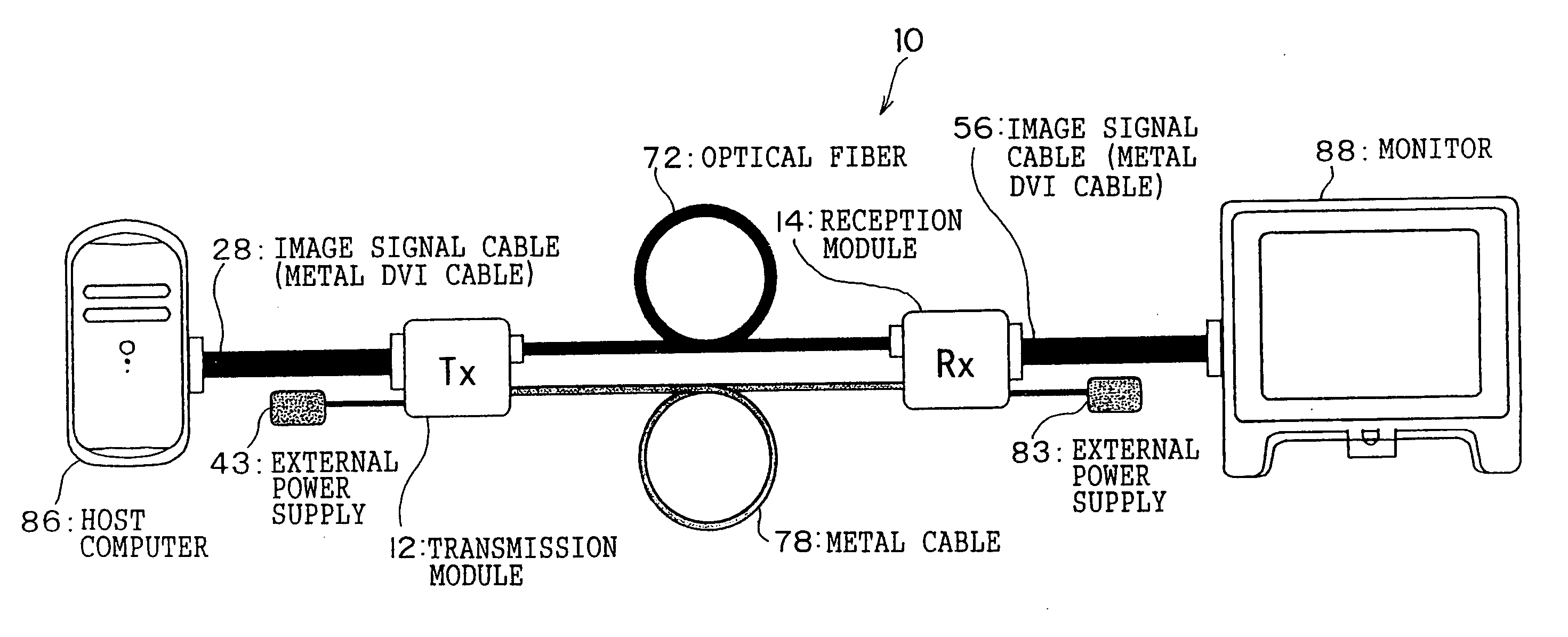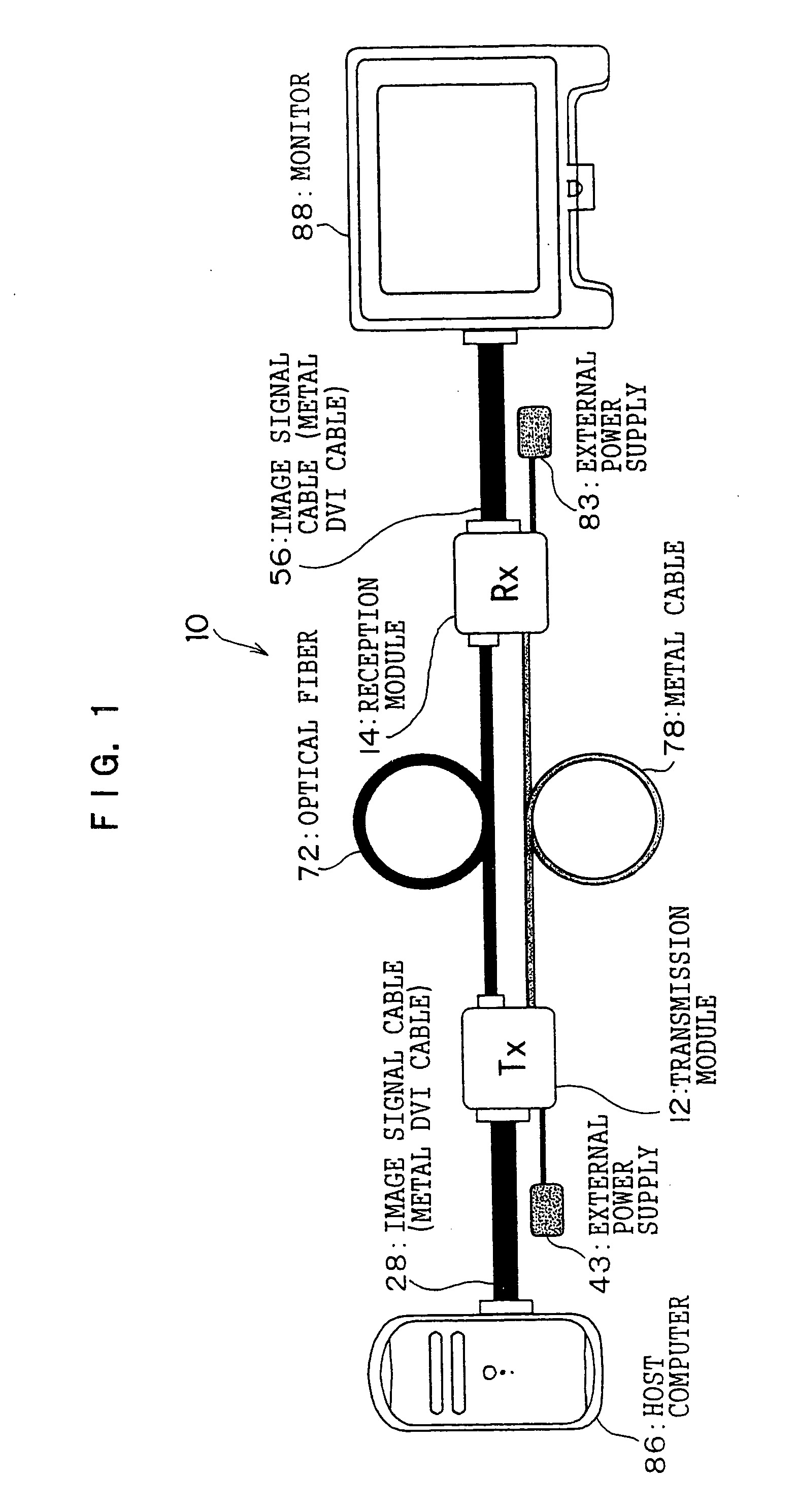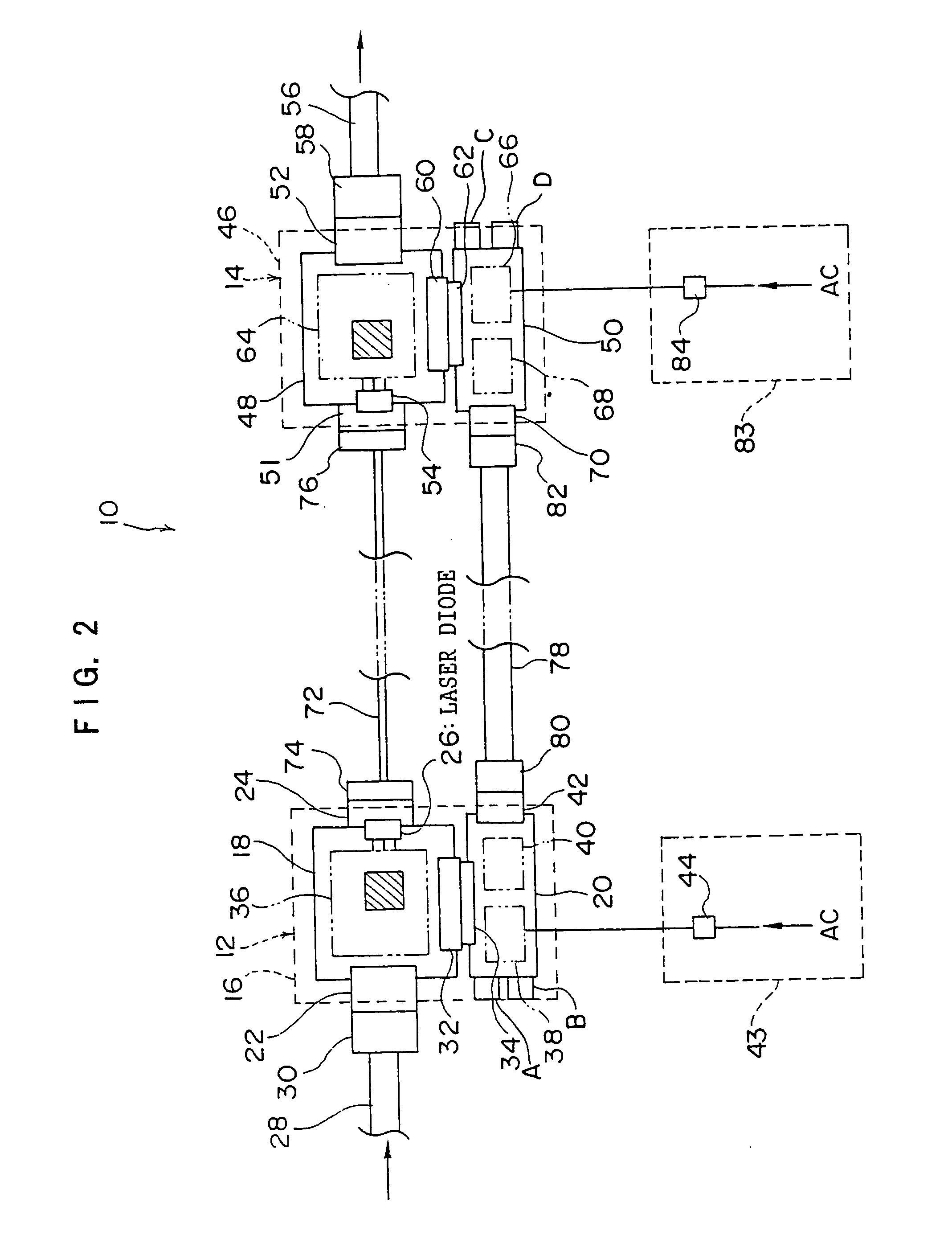Signal transmission device
- Summary
- Abstract
- Description
- Claims
- Application Information
AI Technical Summary
Benefits of technology
Problems solved by technology
Method used
Image
Examples
first embodiment
(Overall Configuration)
[0041] As shown in FIG. 1, an image signal transmission system pertaining to the present embodiment is configured by a host computer 86, a monitor 88, an optical transmission device 10, an image signal cable 28 that is a metal DVI cable connecting the host computer 86 to the optical transmission device 10, and an image signal cable 56 that is a metal DVI cable connecting the monitor 88 to the optical transmission device 10. The optical transmission device 10 is configured by a transmission module 12, a reception module 14, and an optical fiber cable 72 and a metal cable (electrical cable) 78 that connect the transmission module 12 and the reception module 78. External power supplies 43 and 83 are connected to the transmission module 12 and the reception module 14 in order to supply power from the outside.
[0042] The optical transmission device 10 of the present embodiment corresponds to a signal transmission device of the invention, the transmission module 1...
second embodiment
[0119] Next, a second embodiment of the invention will be described in detail. The present embodiment is for further reducing power consumption in regard to the reception module 14. Because the present embodiment has a configuration that is substantially the same as that of the preceding embodiment, the same reference numerals will be given to the same portions, detailed description of those same portions will be omitted, and the different portions will be described below.
(Electrical Configuration of the Transmission Module)
[0120]FIG. 14 shows the schematic electrical configuration of the transmission module 12 in the present embodiment. What is different from the configuration shown in FIG. 4 is that, here, a status output circuit 130 is added which outputs a Tx 5V signal used as a signal representing the power supply status when the external power supply 43 supplies power. The details will be described later, but an input side of the status output circuit 130 is connected to th...
PUM
 Login to View More
Login to View More Abstract
Description
Claims
Application Information
 Login to View More
Login to View More - R&D
- Intellectual Property
- Life Sciences
- Materials
- Tech Scout
- Unparalleled Data Quality
- Higher Quality Content
- 60% Fewer Hallucinations
Browse by: Latest US Patents, China's latest patents, Technical Efficacy Thesaurus, Application Domain, Technology Topic, Popular Technical Reports.
© 2025 PatSnap. All rights reserved.Legal|Privacy policy|Modern Slavery Act Transparency Statement|Sitemap|About US| Contact US: help@patsnap.com



